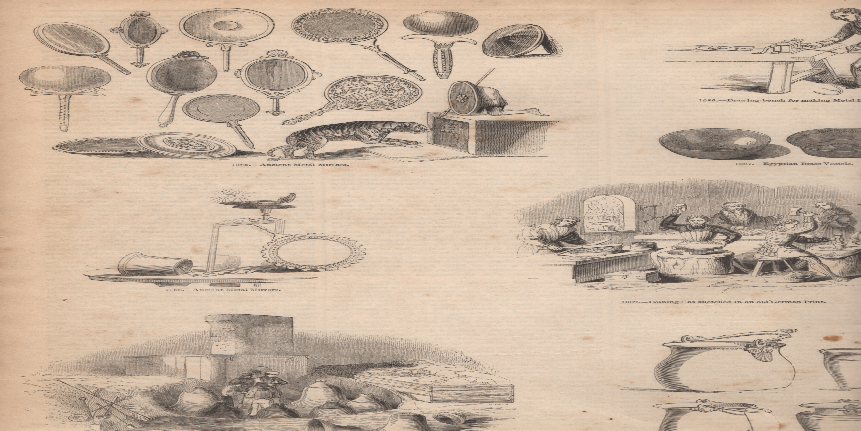116
A Survey of the Somerset Fairs
The charter of king John also granted that the Dean and Chapter of Wells, and the prior and monks of Bath should be free of toll throughout the king’s land for all that they should
buy and sell. By fortunate chance an interesting example has
survived of the careful way in which such privileges were safeguarded. The following incident is given in full, both for the
quaintness of its language, and for the light it throws upon the
punctilious manner of such medieval transactions. The date
is 1250 :2S
Memorandum that on Sunday before St. Andrew 1250 (Sunday
letter B) William, de Beaumunt provost of Bristol gave back to H. subdean
of Wells one halfpenny taken of Walter son of the late Simon de Heanton
his man for toll of a fish sold there, and to John de Derham three farthings
taken of three men for wheat etc. sold there : and this was done towards the
Avene bridge before the seld of Wm. the goldsmith, in the presence of
. . . Clerk of the Toll house, who read the king’s charter before the
said Wm. de Beaumunt in the street, by these tokens, that the said W.
changed a penny with W. the goldsmith for four farthings whereof he
handed three to the said John, and the bell was ringing for Vespers.
And Wm. de Beaumunt added, after hearing the charter read, that he
knew the canons’ men should be quit of toll, and if any had to pay, it was
for want of an oath that they were their villeins. Next day this was
repeated in the toll house by the subdean, and after by Wm. de Beaumunt
before Simon the clerk, mayor of the town, and several burgesses, and
the charter read by Jordan the clerk, whereupon the subdean and the
said John by leave of the mayor withdrew with their toll repaid.
We have already noted elsewhere the transference of fairs to
Priddy and Binegar in time of plague, and the subsequent
duplication of fair days. The four seasons of the year—May,
June, October, and November were observed in Wells down
till the eighteenth century, the lists of 1729 and 1785 both
giving fairs at those times, though the precise date is not
always the same.
Collinson, by a curious misreading of Calixtus, presents us with a fair on St. Catherine’s day.
To-
Saturday in May, now known as May Market, and the other
on the first Tuesday in December. This is the St. Andrew’s
fair. Both are now pleasure fairs, held in the street in front
of the Town Hall, though some cattle are sold at the
ordinary market during the day.
The fairs last only one day, to which is attached an evening pleasure fair on the preceding
25 Calendar of MSS. of Dean and Chapter, vol. i, p. 88
Amid these Joseph in marble
Of Arimathea by name
Hath found perpetual sleep
And he lies on a two-
Next the south corner of an oratory
Fashioned of wattles
For the adoring of a mighty Virgin
In his sarcophagus
Two cruets, white and silver
Filled with blood and sweat
Of the Prophet Jesus
When his sarcophagus
Shall be found entire, intact
In time to come, it shall be seen
And shall be open unto all the world
Thenceforth nor water nor the dew of heaven
Shall fail the dwellers in that ancient isle
For a long while before
The day of judgment in Josaphat
Open shall these things be
And declared to living men.[
Llancarvan,
Glamorganshire,
Wales,
was a college and monastery founded apparently about the middle of the fifth century.
Most Welsh writers assign it to the period of St. Germanus's visit to Britain in A.D. 447, stating further that the first principal was St. Dubric, or Dubricius, on whose elevation to the episcopate St. Cadoc, or Cattwg, succeeded. On the other hand the Life of St. Germanus, written by Constantius, a priest of Lyons, about fifty years after the death of the saint, says nothing at all of any school founded by him or under his auspices, in Britain, nor is mention made of his presence in Wales. The other tradition, supported by the ancient lives of St. Cadoc, assigns the foundation of Llancarvan to that saint, which would place it about a century later than the former date. As, however, these lives confound two, or possibly three, saints of the same name, nothing really certain can be gathered from them. In the "Liber Landavensis" the Abbot of Llancarvan appears not infrequently as a witness to various grants, but none of these is earlier than the latter part of the sixth century. The Abbot of Llancarvan assisted at a council held at Llandaff in 560, which passed sentence of excommunication upon Meurig, King of Glamorgan.

